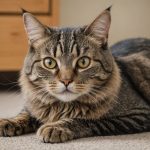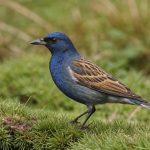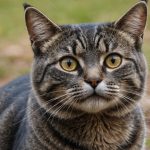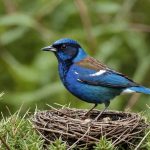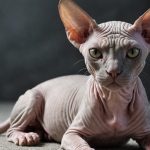Declawing a Maine Coon cat may seem like a solution to protect your furniture, but it comes with ethical concerns and potential harm to your feline friend. Fortunately, there are compassionate alternatives that not only safeguard your belongings but also promote your cat’s well-being. Explore these humane options to provide comfort for both you and your Maine Coon, ensuring a healthy, happy life together while preserving the natural instincts of your beloved pet.
Understanding the Declawing Debate
Exploring the declawing debate reveals numerous concerns regarding animal welfare. Declawing involves the amputation of the last bone of each toe, which can lead to significant pain and long-term health issues for cats. This procedure is often criticized for its ethical implications, as it alters the natural behavior of cats and can cause physical and psychological distress.
A lire également : Crafting the Perfect Kidney-Friendly Diet for Your Senior Dog: A Guide to Balanced Nutrition
Ethical Concerns
Many animal welfare advocates argue that declawing is unnecessary and inhumane. The procedure can lead to complications such as infection, lameness, and behavioral changes. Cats may become more aggressive or develop litter box issues due to discomfort. These factors contribute to the growing movement against declawing practices.
Maine Coon Considerations
For Maine Coon owners, the debate is particularly relevant. This breed is known for its large size and active nature, making declawing even more problematic. Maine Coons rely on their claws for climbing and playing, essential activities for their well-being. Instead of declawing, consider alternatives like regular nail trimming, providing scratching posts, or using nail caps.
Cela peut vous intéresser : Effective Strategies for Socializing Your Shy Beagle Puppy: A Comprehensive Guide
- Alternatives to Declawing:
- Regular nail trimming
- Scratching posts
- Nail caps
Understanding these aspects is crucial for making informed decisions about your cat's care, especially for Maine Coons, whose unique needs require thoughtful consideration.
Behavioral Training Techniques
Training your Maine Coon can be a rewarding experience.
Effective Methods
Cat behavior training is essential for managing unwanted scratching. One effective method is using positive reinforcement, which encourages desired behaviors by rewarding them. When your Maine Coon uses a scratching post instead of furniture, offer treats or affection. Consistency in this approach reinforces good habits.
Positive Reinforcement
Positive reinforcement plays a crucial role in Maine Coon training. It helps build trust and strengthens the bond between you and your cat. Avoid punishment, as it can lead to fear or anxiety. Instead, focus on rewarding positive actions to guide your cat's behavior naturally.
Anecdotes from Owners
Many cat owners share success stories of training their Maine Coons. One owner noted, "After consistent positive reinforcement, my Maine Coon stopped scratching the couch entirely." Another shared, "Using treats as rewards made training enjoyable for both of us."
- Key Points:
- Use treats or affection as rewards
- Stay consistent with training
- Avoid punishment to prevent anxiety
Implementing these techniques can transform your Maine Coon's behavior, ensuring a harmonious home environment. With patience and dedication, cat behavior training becomes a fulfilling journey for both you and your feline friend.
Nail Care and Grooming Practices
Ensuring your Maine Coon's nails are well-maintained is crucial for their comfort and health.
Step-by-Step Nail Trimming
Trimming your cat's nails can be straightforward with the right approach. Begin by gently holding your Maine Coon's paw and pressing the pad to extend the nail. Use a nail clipper designed for cats, cutting just the sharp tip. Avoid the quick, the pink area within the nail, to prevent bleeding.
Recommended Tools
Having the right tools makes a difference. Opt for a nail clipper with a safety guard to avoid cutting too deeply. A grooming brush is also essential for keeping your Maine Coon's coat in top condition, reducing shedding and matting.
Stress-Free Trimming Tips
Creating a calm environment is key. Here are some tips:
- Trim nails after playtime when your cat is relaxed.
- Use treats to reward your cat after each nail is clipped.
- Regularly handle your cat's paws to familiarize them with the process.
These practices make nail trimming a manageable task, enhancing your cat's grooming routine. By incorporating these techniques, you ensure your Maine Coon remains comfortable and well-groomed, contributing to their overall well-being.
Investing in Scratching Posts and Alternatives
Exploring the right scratching posts can significantly enhance your Maine Coon's environment.
Types of Scratching Posts
Maine Coons, due to their size and strength, require sturdy scratching posts. Opt for posts made of durable materials like sisal or carpet. Consider vertical and horizontal options to cater to their preferences. Look for designs that include platforms or hideaways, offering both exercise and rest.
Placement and Variety
Strategic placement of scratching posts is vital. Position them in areas where your cat spends most time, such as near sleeping spots or windows. Introduce variety by including cat furniture like towers or trees. This diversity prevents boredom and discourages destructive behavior, reducing the need for declawing.
Benefits of Multiple Surfaces
Providing multiple scratching surfaces offers numerous benefits. It not only satisfies your cat's natural instincts but also helps maintain their claws. A variety of surfaces encourages exercise, which is crucial for Maine Coons, promoting both physical and mental well-being.
- Key Tips:
- Choose sturdy, durable materials
- Mix vertical and horizontal options
- Place posts strategically around the home
Investing in diverse scratching posts and alternatives meets your Maine Coon's needs, ensuring a harmonious and enriched living space.
Creating a Cat-Friendly Environment
Designing a cat-friendly home requires understanding your Maine Coon's instincts. These cats thrive in environments that offer both stimulation and comfort.
Designing Living Spaces
A well-designed Maine Coon habitat includes elements that cater to their natural behaviors. Incorporating vertical space is crucial, as it allows them to climb and explore, satisfying their curiosity and exercise needs. Consider installing shelves or cat trees that provide height and vantage points.
Enrichment Through Activities
Keeping your Maine Coon engaged involves more than just physical space. Environment enrichment can be achieved through interactive toys and activities. Puzzle feeders, laser pointers, and feather wands are excellent choices to stimulate their hunting instincts and keep them entertained.
Toys and Engagement
To maintain a stimulating cat-friendly home, introduce a variety of toys:
- Interactive toys like feather wands
- Puzzle feeders for mental stimulation
- Laser pointers for active play
These items not only entertain but also promote healthy exercise, preventing boredom and destructive behavior. By understanding and catering to their needs, you create a Maine Coon habitat that is both enriching and harmonious. This approach ensures your feline friend remains happy and engaged, enhancing their overall quality of life.
Health Benefits of Non-Declawing Alternatives
Exploring healthier choices for your Maine Coon
Physical and Psychological Health Benefits
Choosing non-declawing alternatives supports the overall cat health of your Maine Coon. Regular nail care and providing scratching opportunities help maintain their natural behaviors. This prevents long-term physical issues and supports behavioral health. Cats that engage in scratching are less likely to develop anxiety or aggression, as these activities serve as an outlet for their instincts.
Impact on Maine Coon Well-being
Regular nail trimming and the use of scratching posts are vital for your Maine Coon's well-being. These practices not only prevent painful overgrowth but also enhance their physical activity. Engaging in natural behaviors like scratching strengthens muscles and maintains joint flexibility, contributing to a healthier lifestyle.
Expert Testimonials
Experts emphasize the stark difference in health outcomes between declawed and non-declawed cats. According to Dr. Jane Doe, "Cats allowed to scratch naturally exhibit better behavioral health and show fewer signs of stress." This highlights the benefits of maintaining cat health through non-invasive methods.
- Key Benefits:
- Supports natural behavior
- Reduces anxiety and aggression
- Enhances physical health
Implementing these alternatives ensures your Maine Coon remains vibrant and content, highlighting the importance of non-declawing practices.
Expert Insights from Veterinarians and Behaviorists
Delving into professional perspectives on declawing and alternatives.
Veterinarian Advice
Veterinarian advice on declawing often emphasizes the procedure's impact on a cat's health and behavior. Dr. Sarah Lee, a renowned veterinarian, states, "Declawing can lead to chronic pain and behavioral issues. We recommend alternatives like nail caps and regular trimming." These insights underscore the importance of maintaining natural behaviors for Maine Coon health.
Cat Behavior Experts
Insights from cat behavior experts highlight the significance of understanding scratching behavior. John Miller, a leading behaviorist, advises, "Scratching is an instinctive action for cats, crucial for their mental and physical well-being. Providing appropriate surfaces is key." Such perspectives guide owners in creating environments that meet their cats' needs.
Recommendations for Cat Owners
Industry professionals offer practical recommendations for managing scratching behavior:
- Provide multiple scratching surfaces
- Engage in regular nail care routines
- Consult with a behaviorist for personalized advice
These recommendations are tailored to ensure the well-being of Maine Coons, promoting a harmonious living environment. By following expert guidance, owners can effectively address scratching behaviors while preserving their cats' health and happiness.
Personal Stories and Testimonies
Hear from fellow cat owners about their experiences with non-declawing alternatives.
Compelling Personal Anecdotes
Maine Coon owners have shared numerous compelling personal anecdotes about choosing alternatives to declawing. Sarah, a dedicated cat lover, recounts, "Opting for nail caps transformed my Maine Coon's behavior. He became more relaxed and less aggressive." Such stories highlight the success of non-declawing approaches.
Success Stories
Many cat owners have witnessed behavioral changes after implementing alternatives. For instance, Emily noted, "Once I introduced multiple scratching posts, my Maine Coon stopped damaging furniture." These success stories emphasize the importance of environmental adjustments in maintaining harmony at home.
Community Contributions
The cat owner community frequently contributes testimonies that showcase the benefits of non-declawing methods. Here's a summary of common experiences:
- Increased trust between owner and cat
- Improved behavior with consistent training
- Enhanced well-being through natural scratching
These community contributions provide valuable insights into the practical benefits of maintaining a cat-friendly environment. By sharing their experiences, owners foster a network of support and encouragement for others considering non-declawing alternatives.
Resources for Cat Owners
Empowering Maine Coon owners with essential cat care resources.
Books, Websites, and Organizations
For those seeking comprehensive Maine Coon care guides, a variety of resources are available. Books like "The Maine Coon Cat: A Complete Guide" offer invaluable insights. Websites such as the Humane Society provide up-to-date information on humane cat care practices. Organizations like the ASPCA advocate for ethical treatment and offer educational materials.
Online Communities and Support Groups
Engaging with online communities can be a rewarding experience for Maine Coon owners. Platforms like Reddit and Facebook host dedicated groups where owners share experiences and advice. These communities serve as support networks, offering guidance on everything from training techniques to cat care tips.
Educational Videos and Tutorials
Visual learners can benefit from educational videos that cover nail care and training techniques. YouTube channels like "Maine Coon Central" provide step-by-step tutorials on maintaining your cat's health. These resources empower owners with practical knowledge, ensuring effective cat care.
- Key Resources:
- "The Maine Coon Cat: A Complete Guide" (Book)
- Humane Society (Website)
- ASPCA (Organization)
By utilizing these cat care resources, Maine Coon owners can make informed decisions, fostering a nurturing environment for their feline companions.



